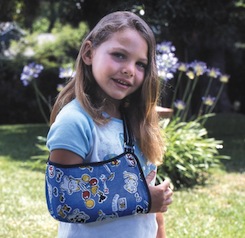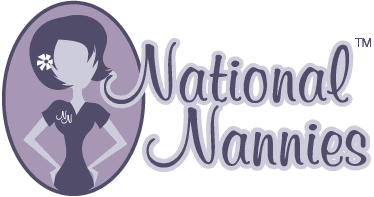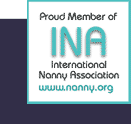When Children Get Hurt in Their Nanny’s Care
September 5, 2012 | in Nannies
 While it’s no secret that bumps and bruises are part of every childhood, even the most minor injury may cause a seasoned caregiver to become riddled with concern when a child is hurt on her watch.
While it’s no secret that bumps and bruises are part of every childhood, even the most minor injury may cause a seasoned caregiver to become riddled with concern when a child is hurt on her watch.
When children get hurt in their nanny’s care they are at the mercy of their nanny to act fast, assess the situation, and administer appropriate care. Nannies must be prepared to deal with any injury that arises, and having an action plan in place can help her to do just that.
What steps should a nanny take after hearing the bloodcurdling scream that indicates trouble?
Step 1. Assess the situation. Take a deep breath and assess the situation. Is the child bleeding from a small scrape to the arm or does he have a gash that has so much blood flowing from it that it looks like it might need sutures? Is the child on the ground in a location and position that indicates he fell from a play structure or is he bent over holding his knee in an open area indicating he likely tripped and fell? Is he choking? Is he breathing? Is he conscious? Are there bumps or areas of swelling? Is there any visible injury? Can the child indicate where he is hurt? The answers to these questions, along with any other observations, will help you to determine the level of care a child needs.
Step 2. Attend to the child. Whether it’s giving a Band-Aid or administering CPR, it’s important that you act fast to minimize the damage. Now is the time to put your first aid and CPR training into action. If the child needs medical attention, call for help and contact the parents as soon as possible. Some children, regardless of how small their “ouchie” is, need lots of emotional comfort following an injury. Be prepared to hug the child and offer all of the affection he needs to bounce back from whatever affliction he is suffering from.
Step 3. Articulate the Incident. Be sure to write down any and all injuries that occur on your watch in your nanny log. Doing so provides important information for the parents to refer to should complications arise from a seemingly harmless incident. Documenting the injury may also help discredit any accusations of abuse or insinuations that you did not inform the parents or report the incident. Be sure to include the nature of the injury, the date and time, any first-aid or medical treatment given, and who was notified of the injury and when.
Step 4. Alert the parents. If the injury is minor, like a bump on the head or a scrape on the hand, and does not need medical attention, you may not have to make a special phone call to alert the parents of the injury. However, some parents may wish to be contacted if any injury, regardless of how minor it is, occurs. It’s a good idea to discuss when and how the parents wish to be contacted should minor routine childhood injuries occur before they actually do. Sometimes sending a quick text or email during your next period of downtime is an appropriate way to notify parents of non urgent injuries.
Step 5. Assess the cause. Did the child trip over a planter in the garden and chip a tooth? Did he scrape his head on the corner of a raised hearth? Did he get into medication that was not properly stored? While all risks can’t be eliminated, nannies can take steps to create the safest environment possible so that her charges are able to safely and freely explore and interact with their world.
While every nanny dreads a child getting hurt under her supervision, the reality is that even the most safety-conscious nanny will have a charge experience some type of injury while in her care. Knowing how to effectively treat an injury is essential.
← 10 Spanish Words Kids Learn from Watching Dora the Explorer | 10 Reasons Why Sesame Street Has Been On For So Long →Comments are closed.
DIY & Sign up Online
We have partnered with eNannySource to help you search for the perfect nanny in your area in addition to our other services.
Enter your zipcode to get started:
Nanny Articles
- How to Calm Back to School Jitters
- What to Include in Your Nanny’s Annual Review
- 25 Blogs Featuring the Most Inspiring Parenting Stories
- Crazy Things Kids Say About Old People
- 21 Blogs with Insightful Tips for Helping Kids Through a Move
- Is Lying to Your Kids About the Tooth Fairy Wrong?
- 21 Blogs Making Fun Homemade Mixtures for the Kids to Get Their Hands Into
- 10 of the Most Hated Cartoon Characters by Moms of All Time
- How to Hide Electrical Wires from Computers, TVs and Small Appliances
- 30 Blogs with the Best Tips on Helping Your Child Prepare for Standardized Testing
National Nannies History
- Pillow Agreement Definition
- Retroactive Caregiver Agreement
- What Is Condition and Warranty in Contract Law
- Shared Ownership Contract Template
- How to Start Labour Contract Business
- Prenuptial Agreement in Bengali
- State of Nj Installment Agreement
- When Does an Agreement Become Unconditional
- Illinois Contract Law Impossibility of Performance
- Service Agreement Francais
- Group Contains a Subject and a Verb in Agreement
- Tenant Commercial Lease Agreement
- Indigo Card Agreement
- Home Improvement Contractors License Louisiana
- The Contracts Rights of Third Parties Act 1999 Shall Not Apply to This Agreement
- Taliban Agreement Text
- 6 Months or 12 Months Tenancy Agreement
- Property Management Agreements Should Include the following except
- Agent Contracting with Humana
- Nrcan Collective Agreement


